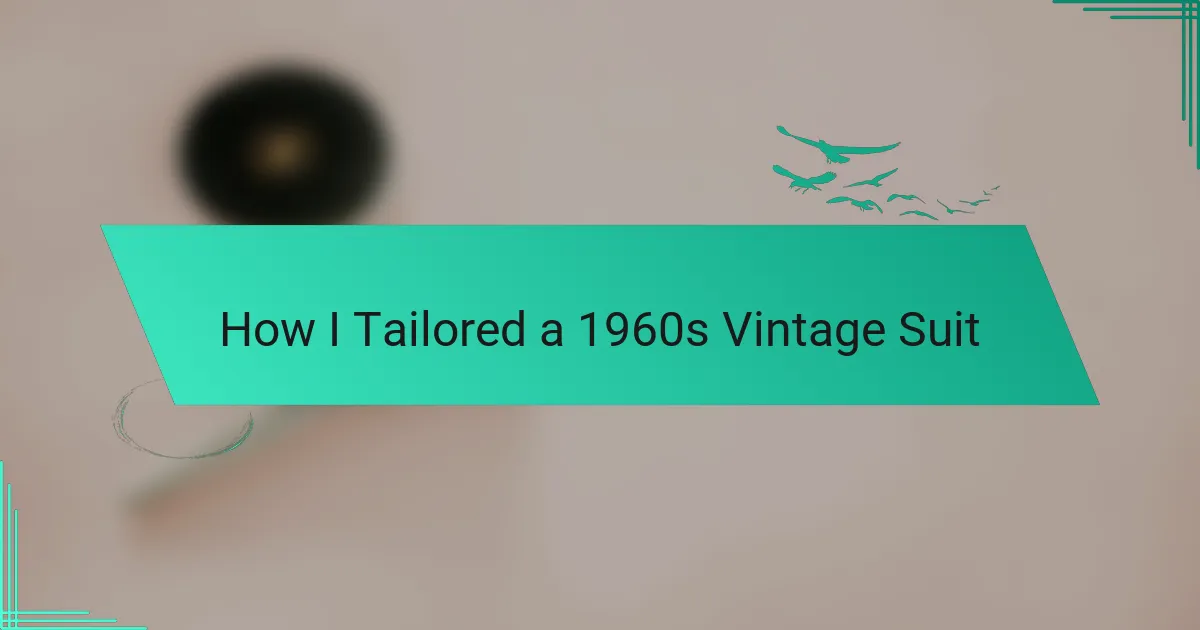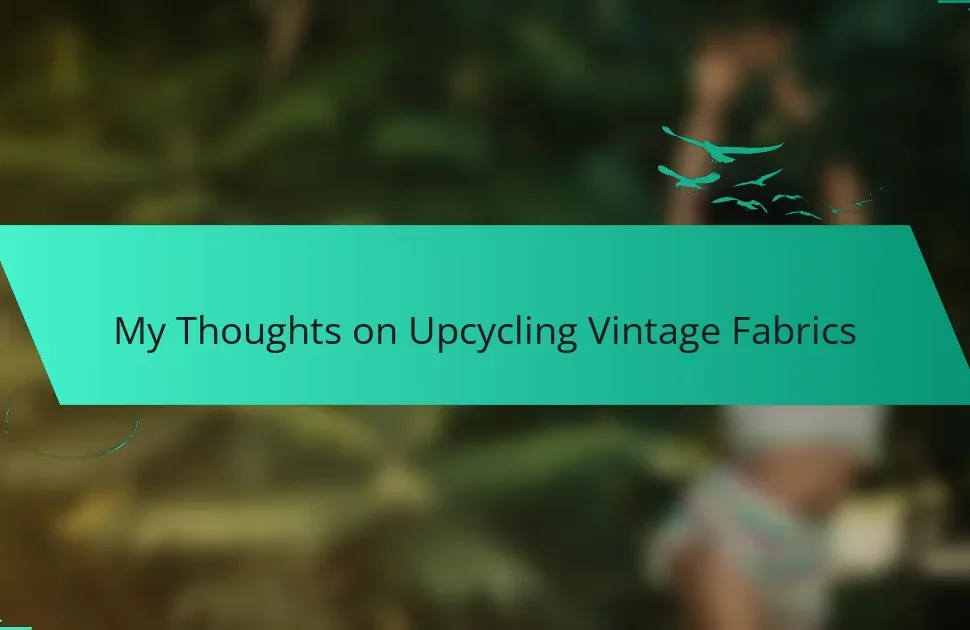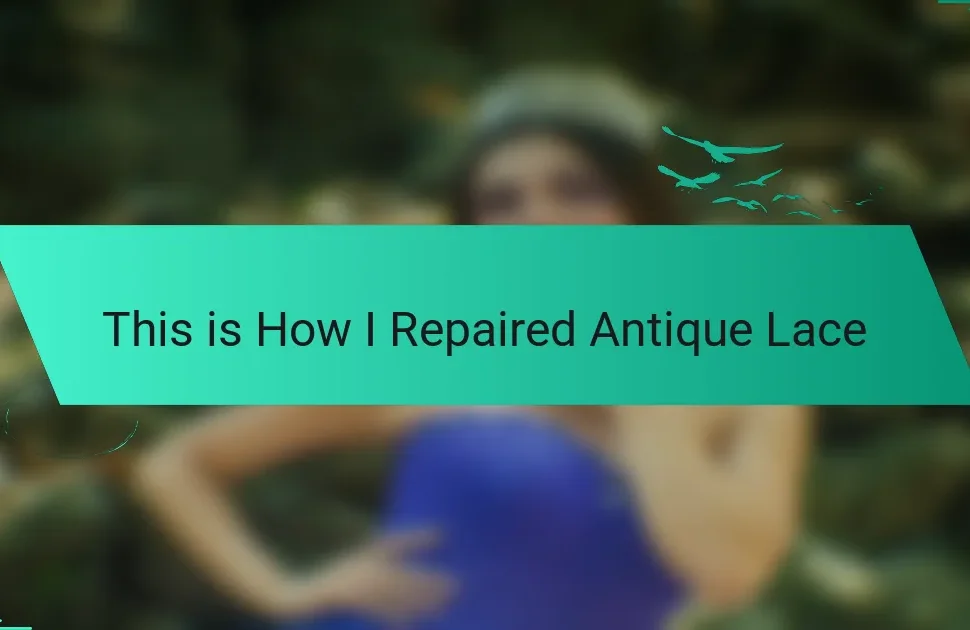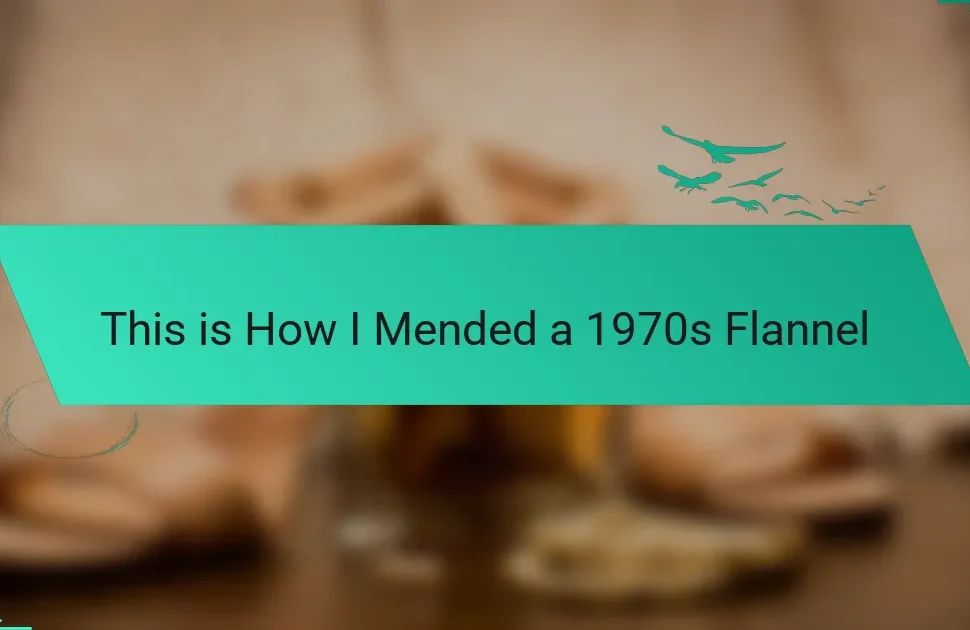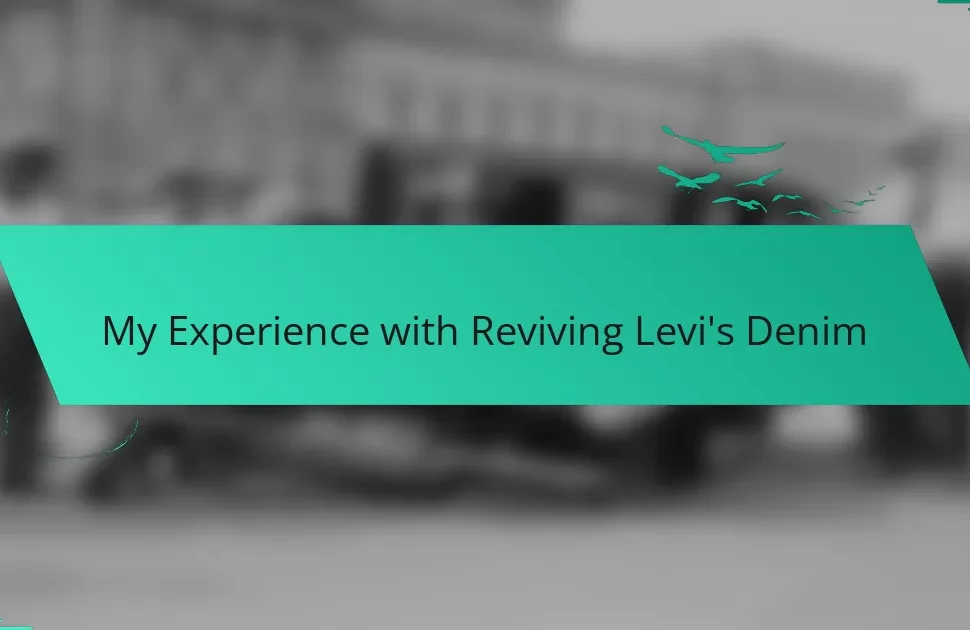Key takeaways
- Vintage fashion offers sustainability and unique personal expression, allowing for customization and creativity.
- Understanding the characteristics of vintage suits, such as craftsmanship and fabric quality, enhances the tailoring experience.
- Essential tools for tailoring include fabric scissors, measuring tape, and a seam ripper to ensure professional results.
- Customizing fit based on individual body shape transforms a vintage suit into a personalized piece of art with its own story.
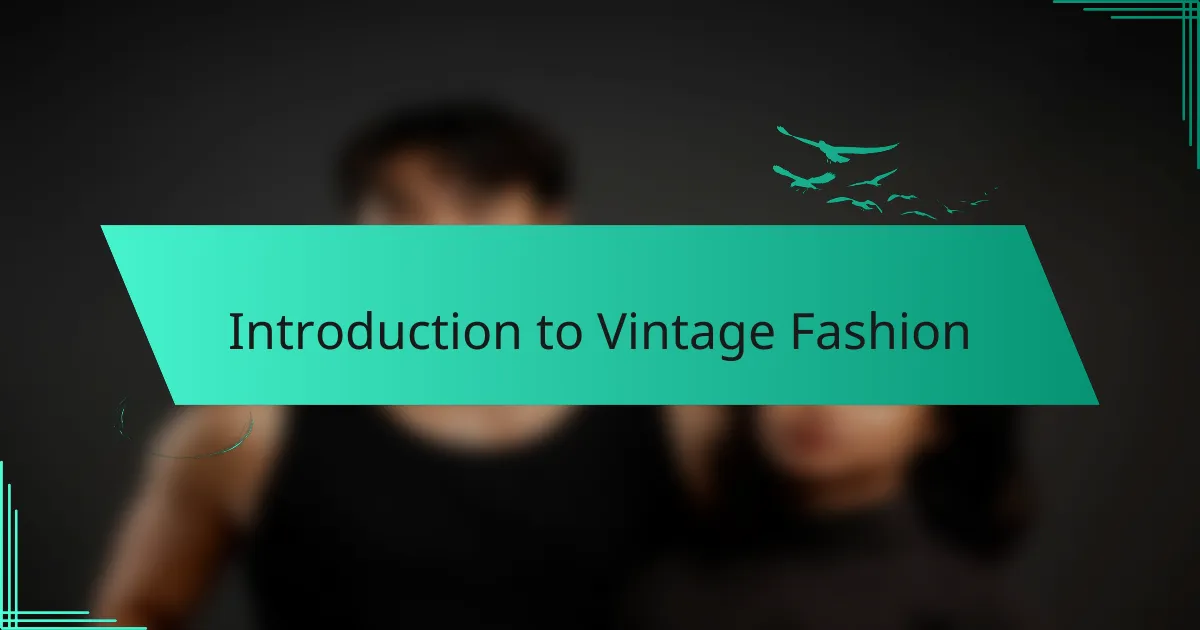
Introduction to Vintage Fashion
Vintage fashion has a unique charm that often draws me in. It’s more than just clothing; it’s a connection to the past, allowing us to tell stories through our style. Every piece carries a history, and when I stumbled upon my 1960s vintage suit, I felt an immediate spark—a sense of adventure waiting to unfold.
The appeal of vintage fashion lies in its timelessness and individuality. Each garment is a canvas that tells its own narrative, and crafting or customizing these pieces can be profoundly rewarding. Here are a few reasons why I love vintage fashion:
- Sustainability: Embracing vintage reduces waste and promotes a more eco-friendly approach to fashion.
- Unique Style: Vintage pieces allow for personal expression, making it easy to stand out from the crowd.
- Craftsmanship: Many vintage items showcase exceptional craftsmanship that is often hard to find in modern clothing.
- Storytelling: Wearing vintage is like wearing a piece of history, and I find joy in imagining the lives of those who wore it before.
- DIY Opportunities: Vintage garments provide an excellent canvas for customization, sparking creativity and personal flair.
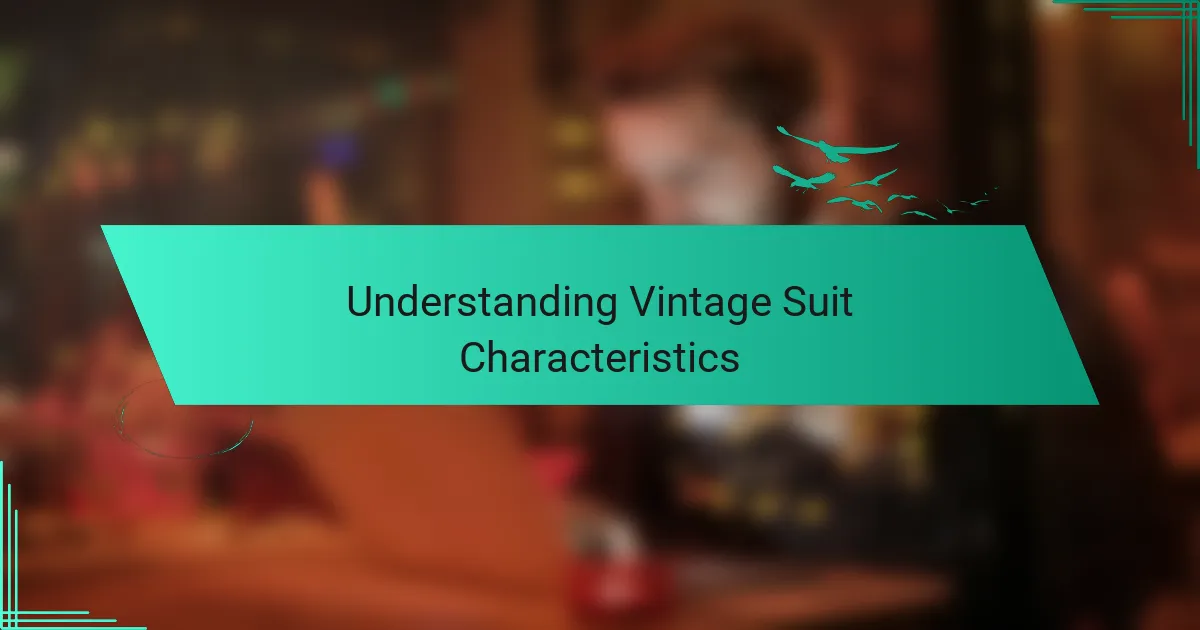
Understanding Vintage Suit Characteristics
Understanding the characteristics of a vintage suit is essential for crafting your own. A 1960s vintage suit often features distinctive cuts, like sleek lapels and a tailored fit, which set it apart from today’s offerings. The quality of materials, often a sturdy wool blend, adds a texture that can feel both nostalgic and luxurious when you wear it.
As I worked on my suit, I noticed the importance of details—like the stitching and lining. Vintage suits typically showcase meticulous craftsmanship, with hand stitching in places where modern suits might skip. I remember feeling a sense of pride as I inspected those finer elements, reminding me of the artisans who crafted these garments with care and skill.
Another characteristic worth noting is the unique color palette exclusive to the era. From bold patterns to rich textures, each suit tells a story through its colors. I often find myself captivated by how vibrant the fabric remains, a testament to its quality. What is it that draws us to these hues? Perhaps it’s the idea that each color reflects a moment in time, connecting us to the past in a way that contemporary styles often can’t.
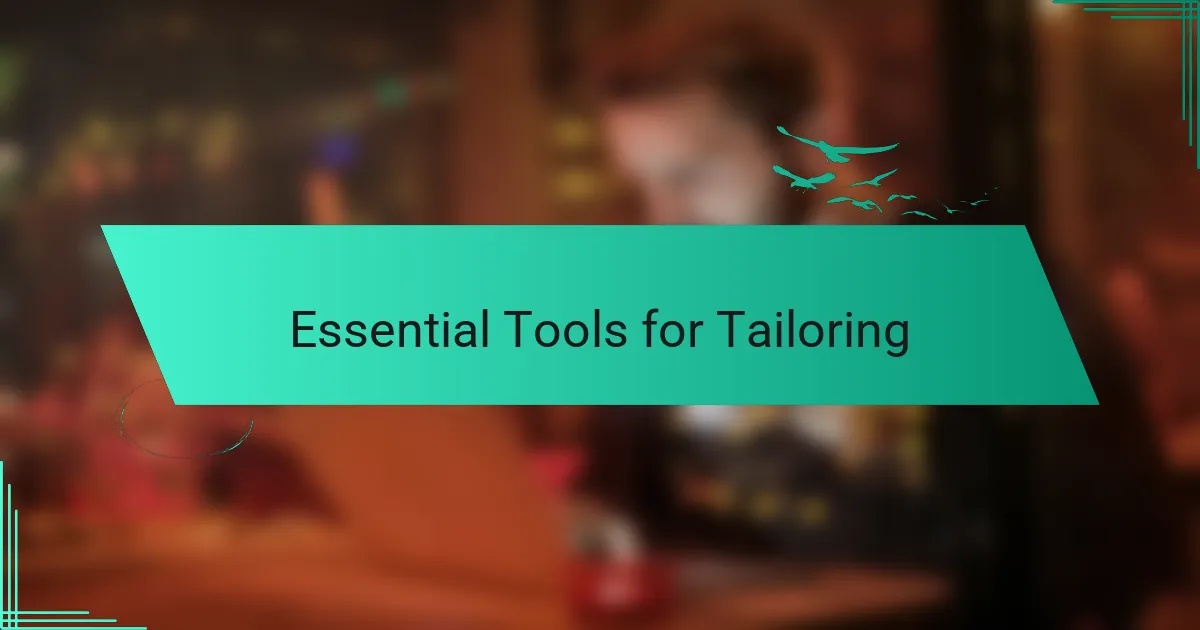
Essential Tools for Tailoring
When it comes to tailoring a vintage suit, having the right tools can make all the difference. I remember my first attempt at tailoring; I was overwhelmed by the various gadgets and gizmos available. But after refining my toolkit, I found that just a few essential items helped me achieve a professional finish.
For instance, quality fabric scissors are non-negotiable. They allow for clean cuts, which is vital for maintaining the suit’s original lines. Additionally, a good measuring tape and a seam ripper became my best friends—cutting can be intimidating, but accurately measuring and adjusting takes away the stress.
Here’s a handy comparison of essential tools you might consider for your tailoring project:
| Tool | Function |
|---|---|
| Fabric Scissors | Used for cutting fabric cleanly. |
| Measuring Tape | Helps ensure accurate measurements for fitting. |
| Seam Ripper | Great for removing stitches without damaging the fabric. |
| Tailor’s Chalk | Used for marking fabric; washes out easily. |
| Iron | Essential for pressing seams and giving a polished look. |
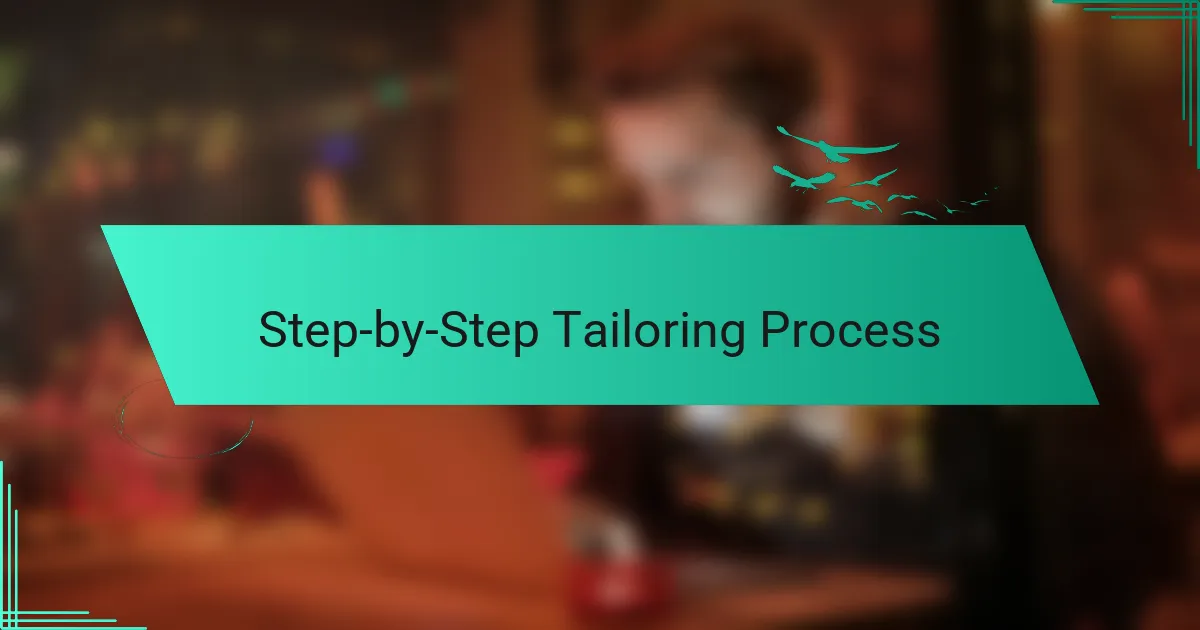
Step-by-Step Tailoring Process
When I first set out to tailor my 1960s vintage suit, I was both excited and a bit intimidated. The charm of that era is irresistible, but fitting something so unique to my style took careful planning. I remember carefully scrutinizing the stitching and the fabric. It was important for me to maintain the vintage feel while ensuring a perfect fit.
Here’s a step-by-step breakdown of the tailoring process I followed:
- Assess the Suit: Start by trying it on and noting the areas that require adjustments.
- Gather Tools: You’ll need fabric scissors, a measuring tape, chalk for marking, and a sewing machine.
- Make Initial Adjustments: Pin or baste the suit to its new size, addressing common areas like the sleeves and waist.
- Sew the Alterations: Carefully sew along the pinned areas, maintaining the original seams if possible.
- Finish Edges: Trim any excess fabric and finish the edges to prevent fraying.
- Final Fitting: Try the suit on again to ensure everything fits comfortably, making any last-minute tweaks as necessary.
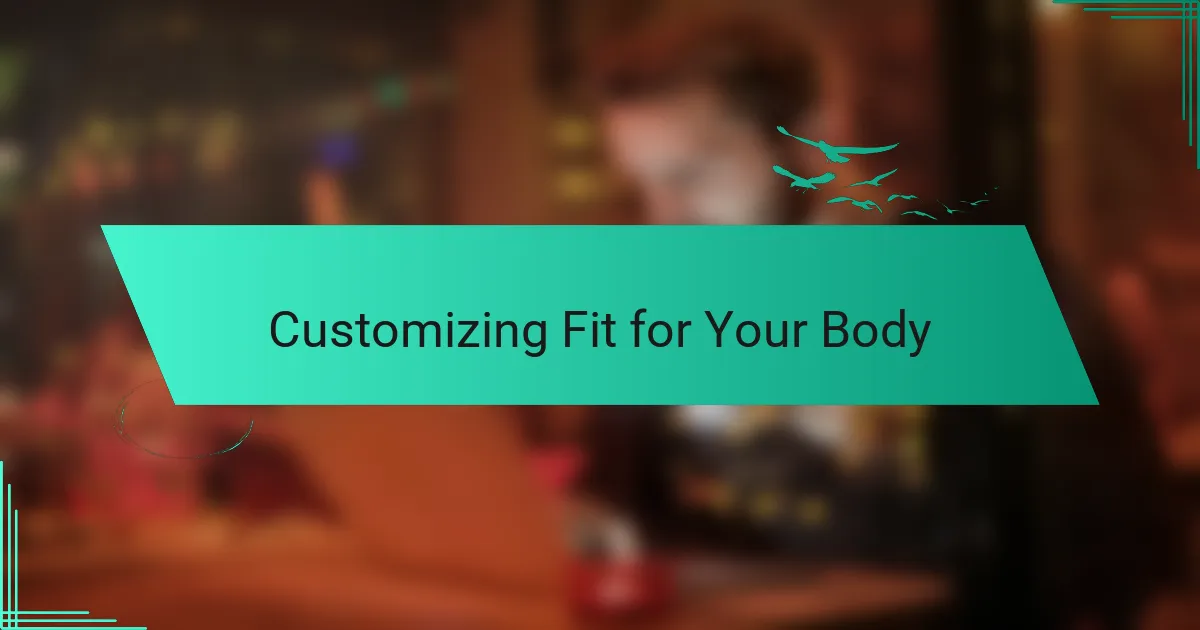
Customizing Fit for Your Body
Customizing a vintage suit to fit your body is a rewarding experience. When I first worked on my 1960s suit, I was determined to make it feel like it was made just for me. I remember the first fitting; the sleeves were too long, and the waist was loose. I felt a bit discouraged, but the thought of transforming this piece into something I would love kept me motivated.
It’s important to consider your body shape—there’s no one-size-fits-all solution in vintage fashion. I used my sewing machine to take in the waist and shorten the sleeves, which not only improved the silhouette but also gave me a sense of accomplishment. Every adjustment made me appreciate the craftsmanship of the suit even more.
Here’s a quick comparison of key fit adjustments that can elevate your vintage suit’s appearance:
| Adjustment | Description |
|---|---|
| Sleeve Length | Shortening or lengthening sleeves to enhance arm mobility and comfort. |
| Waist Tailoring | Taking in or letting out the waist to create a flattering silhouette tailored to your figure. |
| Pant Hemming | Adjusting the length of the pants to achieve a polished look while maintaining proportions. |

Personal Experiences with Vintage Suit
Personal experiences with a vintage suit can be transformative. When I first stumbled upon a 1960s vintage suit at a local thrift store, I was captivated by its bold patterns and rich fabric. The moment I tried it on, I felt an instant connection, as if I were stepping back in time, embodying the elegance of a bygone era.
Tailoring the suit took patience, but it was a rewarding journey. I recall the excitement of carefully altering the sleeves and taking in the waist, all while channeling my inner fashion designer. Each stitch I made felt like I was reshaping not just the fabric, but also crafting a unique piece of my personal history.
I’ve learned that wearing something vintage is not just about style—it’s about the stories woven into the fabric. I often get compliments when I wear the suit, and I love sharing its history with others, noting that each detail was chosen by someone else long ago. It creates a fascinating conversation starter that connects me with fellow vintage enthusiasts.
| Experience | Details |
|---|---|
| Finding the Suit | Discovered at a thrift store, instantly captivated by it. |
| Tailoring Process | Took time to alter; felt like a journey of self-expression. |
| Wearing the Suit | Compliments often lead to stories and connections with others. |
